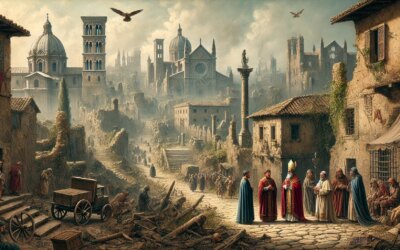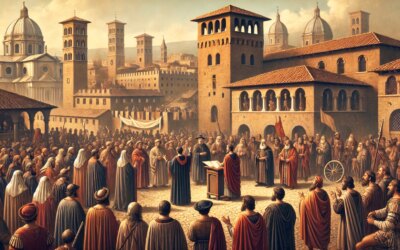Rome Under Threat: The Saracen Raids
By the 9th century, Rome faced a new and growing danger: Saracen raiders from North Africa. These Muslim forces frequently attacked coastal cities and even threatened the Eternal City itself. The most devastating raid occurred in 846 CE, when Saracen forces sacked the outskirts of Rome, including St. Peter’s Basilica. In response, Pope Leo IV launched an ambitious project to fortify the city—the construction of the Leonine Wall.
The Vision of Pope Leo IV
Pope Leo IV (r. 847–855 CE) recognized the need for stronger defenses to protect Rome’s sacred sites. He initiated the construction of massive fortifications around the Vatican area, enclosing what would later be called the Leonine City. The wall stretched over 3 kilometers, fortified with towers and gates to withstand future attacks.
The Construction of the Leonine Wall
Building the wall was a monumental effort. Skilled masons, laborers, and Roman soldiers worked tirelessly, using stone salvaged from ancient ruins. The fortifications were completed in just four years, an impressive feat for the time. The wall included defensive towers, strategically placed to provide archers with a clear view of any approaching threats.
A Symbol of Papal Power
The Leonine Wall was not just a military necessity—it was a statement of papal authority. By reinforcing Rome’s defenses, Leo IV asserted the pope’s role as both a spiritual and temporal leader. The wall became a defining feature of medieval Rome, shaping the city’s landscape for centuries.
The Legacy of the Leonine Wall
The fortifications successfully deterred further Saracen attacks, allowing Rome to recover from the devastation of the 9th century. Over time, the wall was incorporated into the city’s evolving defenses, influencing later construction projects. Today, remnants of the Leonine Wall still stand, a testament to the resilience of medieval Rome and the leadership of Pope Leo IV.
Rome’s Defenses Through the Ages
The construction of the Leonine Wall marked a turning point in the city’s history. It demonstrated the necessity of military preparedness in an era of instability and set a precedent for future defensive expansions. Rome, once the heart of an empire, had adapted to the challenges of the medieval world, ensuring its survival for generations to come.






